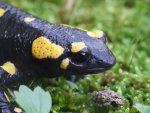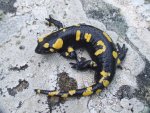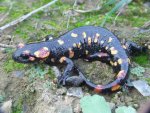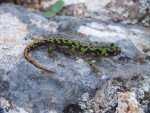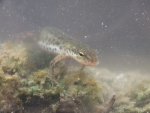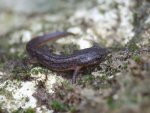Last week, Mark Bakkers and I travelled with fellow students Peter, Diederik and Philip to Andalusia mainly to observe herpetofauna. We had one major problem; except for few days rain two weeks ago, the area was as dry as could be. The Cota Donana was dry, same for the mountains in Cadiz and Huelva. The combination with a musquito plague in the Donana resulted in almost no anurans.
Large searches were however done for the caudates; in the end we managed to find Lissotriton boscai in fountains in the mountains, and after long, demotivating searches two juvenile and one adult Salamandra salamandra longirostris, which was at least my highlight of the trip. Triturus pygmaeus adults hadn't entered the water yet, but juvenils were usually present under stones. The last day we decided that we couldn't leave without seeing S. s. morenica, and with lots of luck and some hints we found two adults north of Sevilla.
We observed other nice species like Discoglossus (galganoi) jeanne, Chameleons and lots of lizards and snake species.
Thanks to David for his company, and others who gave hints for the trip!
Large searches were however done for the caudates; in the end we managed to find Lissotriton boscai in fountains in the mountains, and after long, demotivating searches two juvenile and one adult Salamandra salamandra longirostris, which was at least my highlight of the trip. Triturus pygmaeus adults hadn't entered the water yet, but juvenils were usually present under stones. The last day we decided that we couldn't leave without seeing S. s. morenica, and with lots of luck and some hints we found two adults north of Sevilla.
We observed other nice species like Discoglossus (galganoi) jeanne, Chameleons and lots of lizards and snake species.
Thanks to David for his company, and others who gave hints for the trip!

